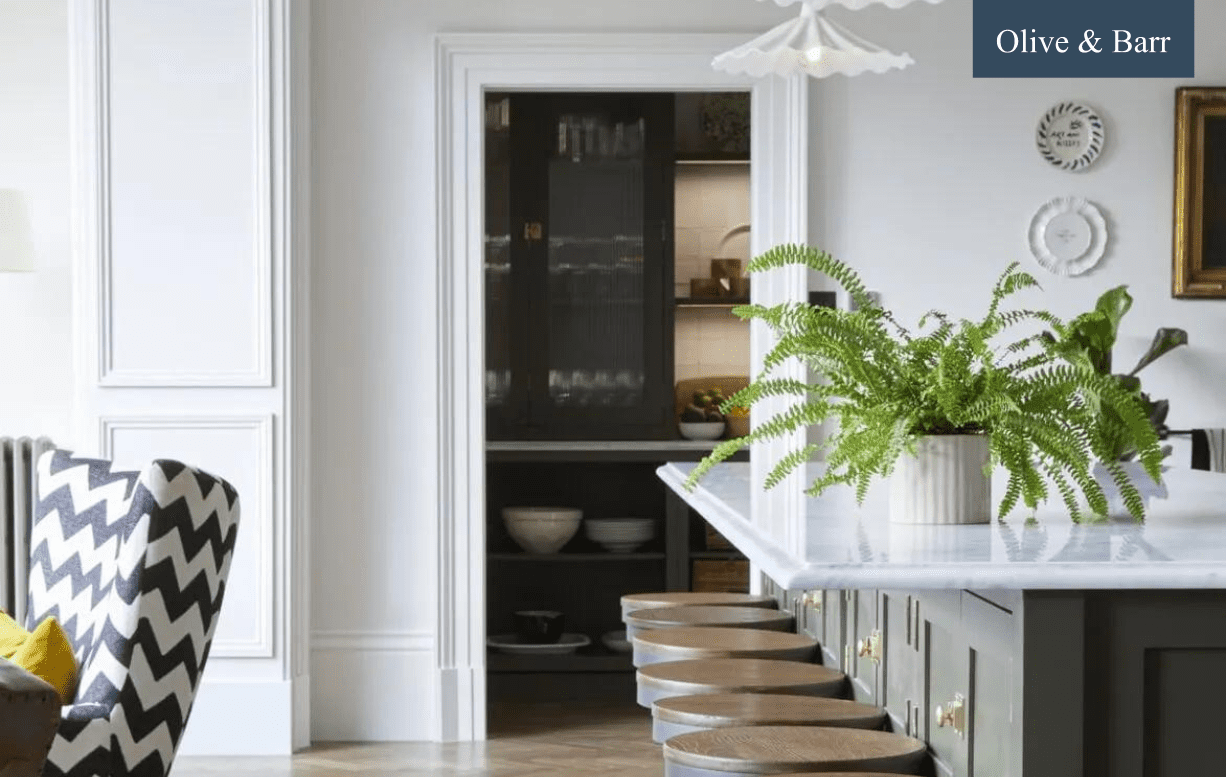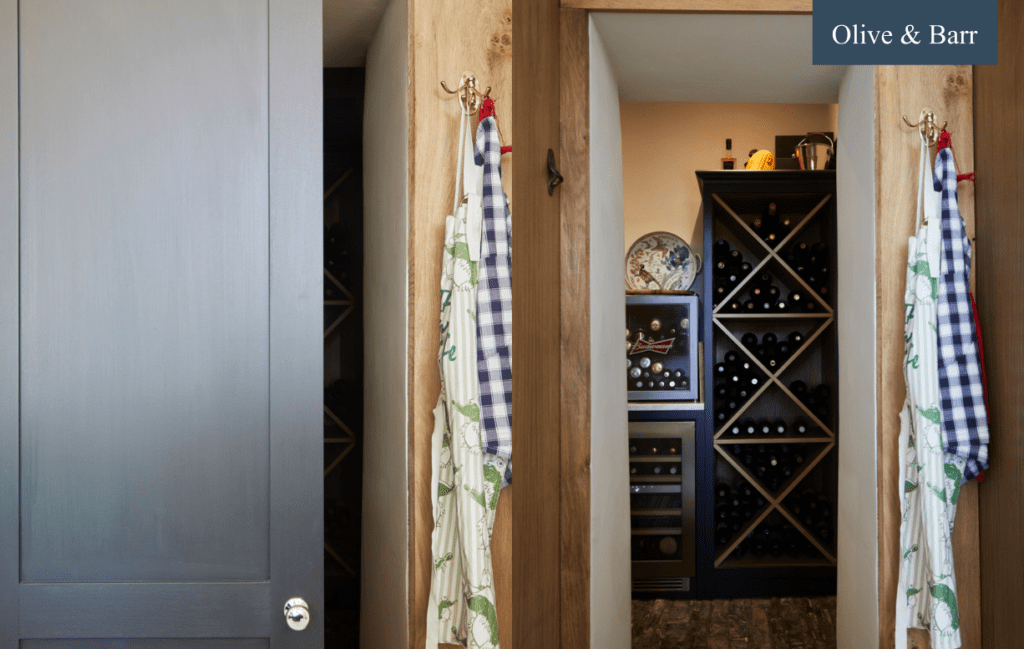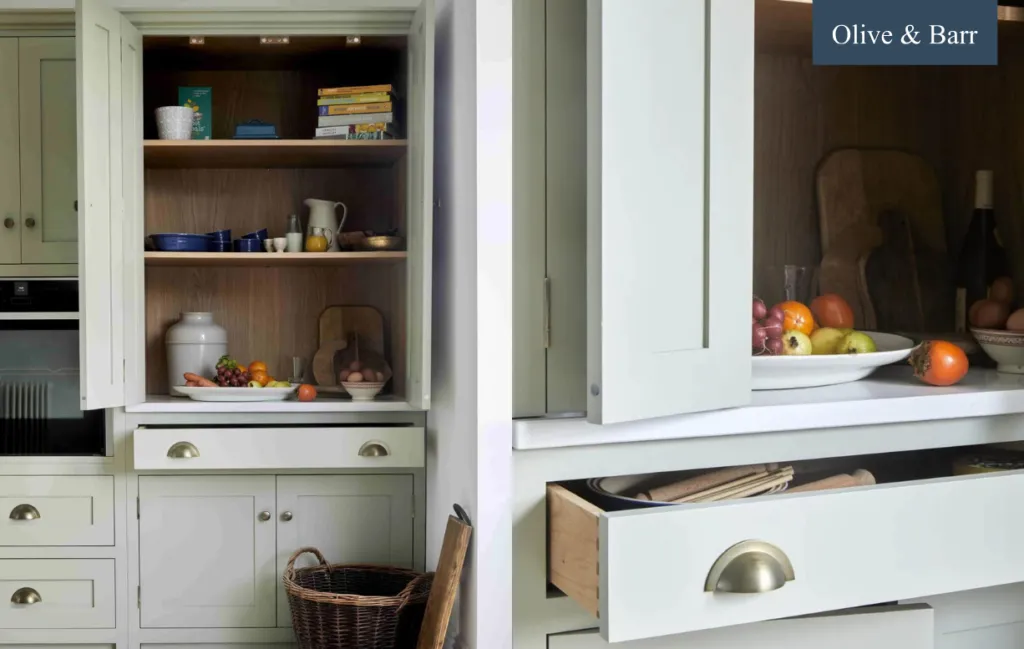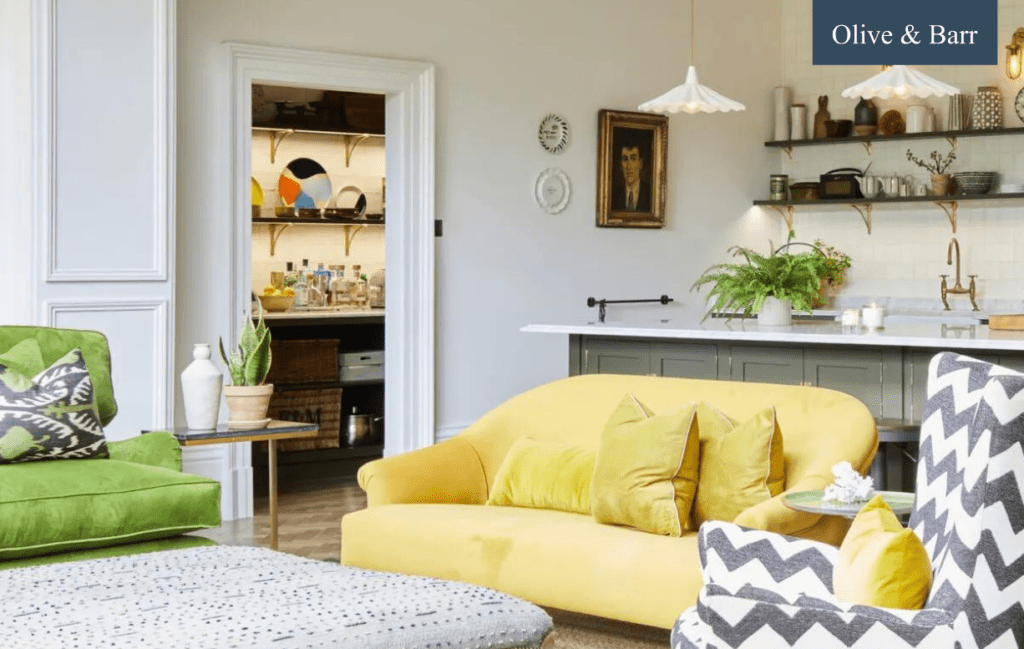
With so many decisions to delve into, it’s easy to see why everyone’s kitchen wish list looks a little different. And yet there’s one piece of furniture that tops them all: larders and pantries. Once an absolute staple in the world of kitchens, these impressive storage solutions have seen a resurgence in recent years, becoming a priority for many a home renovation project. And we get it. They are the secret to clutter-free living, and the perfect place to store everything from delicious spices to kitchen appliances.
Of course, adding a kitchen pantry or larder into your kitchen isn’t all about functionality. They’re also the perfect way to bring a clean, organised and elevated aesthetic to your space, no matter what style of kitchen you’ve embraced. Farmhouse or townhouse, contemporary or classic, industrial or cosy, they are the perfect addition. The question is: what is the difference between a larder and a pantry, and why should you consider having one in your home?
To answer this, our design experts have pulled together this essential guide to help you better understand exactly what pantries and larders are, their key features and biggest benefits. Enjoy.

What exactly is a kitchen pantry?
Originally used to store bread during the Medieval times, pantries have been a staple part of the home for centuries and centuries. Usually a small room or large cupboard, they have been used to store this, that and everything, from food to drinks, crockery to cutlery, and those other kitchen essentials that you maybe can’t squeeze into your kitchen cabinets. But the modern-day pantry has adapted to meet the demands of today..
Enjoying a resurgence as a key element within any kitchen, our pantries are handcrafted to meet the needs of your space, using bespoke designs to bring an extra layer of personality and practicality to your kitchen as a way of keeping your space clutter-free.

What exactly is a kitchen larder?
The nuanced difference that makes a larder a larder, and not a pantry, is the way they are built into your kitchen design, usually bookending your cabinets with a floor-to-ceiling storage solution. In that sense, they’re a more space-saving option that have a panache for making life easier. That’s because these clever cupboards are designed to help organise all of your pantry goods, while also keeping them within easy reach as you move around your kitchen.
And just like traditional pantries, larders are actually incredibly practical thanks to the way we tailor-make each one to suit your specific wants and needs, whatever they may be. They’re all about maximising your space so that your kitchen life feels seamless from dawn until dusk. Drawers to store your pots and pans, open shelving for your dried foods, wine racks for that little passion of yours and spice drawers that make selecting the right herb hassle-free. Quite simply, a larder is the perfect way to maximise the practicality of your kitchen.

Pantries and Larders: The Differences
In today’s world, a lot of people have taken to using the terms ‘larder’ and ‘pantry’ interchangeably for the simple reason that their primary purpose is the same: to store food. That said, there are a few nuanced differences between a kitchen larder and a pantry.
All About Space
This might be the biggest difference of them all and it equates to the space available in your home. That’s almost-always the deciding factor when people are deciding between a larder and a pantry.
With that in mind, kitchen larders are typically a built-in cupboard or cabinet that is located within the kitchen, adding another layer of practicality to your kitchen layout, as well as giving you easy access to everything you store behind the cabinet doors. And, the best part, it’s all designed and built to enhance your current kitchen space.
A pantry, on the other hand, tends to be a larger space, usually a separate room or closet that’s added to your renovation project through the clever use of architectural features. As such, this walk-in storage option can remain an out-of-reach dream for those that just don’t have the space required to add, create or free up extra room adjacent to the kitchen.
Keeping Cool
While both options are designed to store dry foods and goods, larders tend to be all about food-focussed functionality, with shelves and drawers that are dedicated to storing things like flour, sugar, pastas and cereals, as well as canned goods, fruits, breads and vegetables in a cool, dry area. That’s their secret.
Pantries, however, are often small rooms or cupboards where the temperature is a little less regulated, making them the perfect place to store non-perishables, beverages, crockery, cutlery and any other miscellaneous kitchen items that might need a home away from the kitchen. And because they typically have more storage space, they also offer a place to house appliances, cookware and cleaning supplies too.
Design Decisions
When it comes to incorporating a pantry into your kitchen renovation, a lot more detail, long-term planning and space is required for the simple reason that a pantry needs to be built into the architecture of your home, whether you decide on personalised cabinetry or more of a walk-in cupboard.
What makes a larder different in this respect is the way it can be purchased separately or built to your needs and then seamlessly incorporated into your kitchen design, regardless of what style your kitchen celebrates. You also have much more freedom with the design of a larder as you decide on what finish, material, colours, details, layout and hardware to go with.
A Declutterers Dream
There’s a reason the phrase, ‘an uncluttered home equals an uncluttered mind’ and the reason is it works. That’s why it’s so important to maximise your storage options when designing a new kitchen. Think of it as a chance to keep your kitchen tidy, give everything a place and neatly hide any excess equipment away to enhance the functionality and space in your kitchen. That’s where larders and pantries can become life-changing additions.
Sure, larders and pantries may have big differences, but they both address the issue of mess, clutter and the need for storage. The trick is to utilise these storage spaces in a way that allows you to decorganise and not just create a new dumping ground. Add open shelving as closed drawers to create another level of organisation and then add a sense of order using mason jars, bamboo holders and neatly labelled containers.
Think a pantry or larder could be the storage solution of your dreams? If so, get in touch with the Olive & Barr design team for a kitchen consultation.